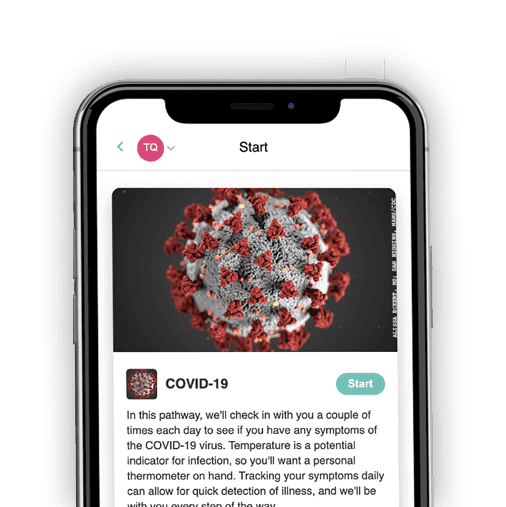A handy guide for businesses and organizations planning their return to full normal
The past year has been a crash course in advanced workplace safety and workforce health, in the face of the worldwide COVID-19 pandemic, for employers of all sizes. Most employers now know more about pandemics, viruses, and public health protocols than they did 18 months ago.
But questions still remain, especially as our communities and states are now in a race to vaccinate its way to herd immunity and, eventually, to eliminate COVID-19 altogether.
For today’s COVID-19 pandemic, there are dozens of vaccines either being developed, in pre-clinical or in clinical trials, or awaiting approval. Three are in use and with one (Oxford-Astra-Zeneca) moving toward an emergency approval to begin distribution in the United States:
- Oxford-Astra-Zeneca (viral vector vaccine), 2 doses
- Pfizer-BioNTech (nucleic acid vaccine), 2 doses
- Moderna (nucleic acid vaccine), 2 doses
- Johnson & Johnson (viral vector vaccine, pending), 1 dose
In this overview, we’ll explore and explain how these vaccines work and how they will help us turn the tide against the pandemic. We’ll also discuss some of the questions that many employers are asking about COVID-19 vaccination and their workforce.
Easy COVID-19 tracking for your business.

Let’s start with a basic understanding of pandemics
Americans are divided about many things, but there is almost no reputable disagreement over the fact that we are in a pandemic.
And while there is no single accepted definition of the word pandemic, a general consensus has emerged that most health experts apply for the word:
A pandemic is a disease that has a wide geographic extension, spreading from location-to-location, person-to-person, or region-to-region, with high, explosive attack rates, in populations with minimum immunity due to its newness (“novelty”); such explosive spread is due to its infectiousness (of each person), contagiousness (between persons), and severity.
This pandemic concept may only partially describe pandemics throughout history. For instance, obesity is a pandemic, but there is no contagiousness. One characteristic, however, does apply to the broad range of pandemics: wide geographic distribution.
What makes today’s COVID-19 pandemic so vicious is that it seems to “have it all.”
Are pandemics common?
No, in one sense, but too common from an existential point of view: if you fall victim to a pandemic, on a personal level it doesn’t matter whether it has happened every 500 years or every year.
Historically, the word plague has evoked the same fears and casualties as the modern term. Going back to the late Roman Empire and Dark Ages through the last century, we’ve had at least three Yersinia pestis (bacterial) pandemics – which many chroniclers and historians routinely call “plagues”:
- Pandemic of 541-750—the Justinianic Pandemic, 25-50 million deaths
- Black Death, from 1346 to mid-19th Century, 50 million deaths
- Pandemic of 1894-1950 in south and East Asia, 12-13 million deaths
In addition, there have been seven recorded Cholera (Vibrio cholerae bacterial) pandemics in modern history. The two most devastating Cholera pandemics each resulted in over a million deaths:
- The 3rd Cholera pandemic. Lasting eight years, from 1852 to1860, this was the deadliest of the seven Cholera outbreaks. It originated in India, before spreading to Asia, Europe, North America, and Africa. Russia was the worst hit, with over 1 million deaths, but even the island of Puerto Rico lost more than 25,000 people in the pandemic.
- The 6th Cholera pandemic. While only lasting about two years, 1910-1911, also resulted in over a million deaths. However, because of better sanitation, the countries of western Europe and the United States were able to contain the spread within their borders. But it ravaged the rest of the world, including 500,000 deaths in Russia.
Influenza (“flu”) has been the biggest pandemic challenge faced by every country in the world during the past 150 years. The following are just a few of the biggest influenza pandemics the world has faced:
- H3N8 pandemic (1889-1890). An outbreak of influenza virus H3N8, also called Equine Influenza because it is related to a highly contagious influenza strain among horses, donkeys, and mules – broke out in Miami in 1889. It then spread throughout Europe, North America, and South America, resulting in over a million deaths.
- H1N1 pandemic (1918-1920). Erroneously labeled the Spanish Flu, this pandemic differed from 1899-1890 in that it killed able-bodied persons and not just the very young and the elderly. It spread throughout the world, aided by troops returning home from the end of World War I, and resulted in 20-50 million deaths.
- H2N2 pandemic (1957-1958). Previously called the Asian Flu, this new influenza strain started in Singapore before spreading to the US and the rest of the world. The Centers for Disease Control and Prevention (CDC) estimates that more than 1.1 million people died worldwide from the pandemic, including more than 100,000 in the US.
- H3N2 pandemic (1968-1970). Originating in China and labeled the “Hong Kong” flu, the H3N2 virus is estimated to have resulted in about one million deaths, including more than 100,000 in the US.
With our improved sanitation and modern health systems, today’s COVID-19 pandemic has already resulted in over 2.5 million deaths worldwide – including more than 500,000 in the US alone. Thus far.
Easy COVID-19 tracking for your business.

Understanding the disease to understand vaccination
To understand how Covid-19 immunization occurs, the nature of the coronavirus and vaccines themselves must be appreciated. What exactly is the SARS-CoV-2/COVID-19 coronavirus?
There are many coronaviruses; the SARS-CoV-2 coronavirus that causes COVID-19 is only one of them. What’s in a name? This one is so named because of its spikes around it, resembling a “corona,” Latin for “crown.” The disease it causes is Co-Vi-D-19:
- Co = “Corona”
- Vi = “Virus”
- D = “Disease”
- 19 = 2019, the year of emergence
Most coronaviruses usually cause mild respiratory infections, similar in symptoms to the common cold. The more menacing coronavirus that causes COVID-19 (“d” for “disease”) is a new one, however, so it is referred to as “novel”; it is a SARS virus, causing a new disease that was subsequently renamed COVID-19 by the World Health Organization.
The actual virus, originally called “2019-nCoV” was renamed “SARS-CoV-2” by the International Committee on Taxonomy of Viruses. Thus, 2019-nCoV (2019 “novel” coronavirus, renamed SARS-CoV-2), causes COVID-19 (disease):
- SARS-CoV-2 is the virus!
- COVID-19 is the disease!
We’ve seen something like this virus before. SARS stands for Severe Adult Respiratory Syndrome, a severe viral pneumonia first identified in 2003, caused by SARS-CoV. Since then, two other ones have emerged, MERS-CoV (Middle Eastern Respiratory Syndrome) and SARS-CoV-2 (causing the COVID-19 pandemic and identified it as “-2” to distinguish it from the one that emerged in 2003).
When novel diseases emerge, it is theorized that a virus normally contained in a specific species has “jumped” species, e.g., from bats to humans. This involves a change in its characteristics that the human being’s immune system has never seen before; this infection is like an ambush.
The first SARS illness likely originated from Himolayan civet (small mammalian carnivore) and racoon dog meat in a Chinese exotic meat marketplace (Guangdong). MERS likely came from coronaviruses from bats and camels.
Developing vaccines for the disease
Scientists around the world are developing many potential vaccines for COVID-19. These vaccines are all designed to teach the body’s immune system to safely recognize and block the virus that causes COVID-19—and to stop it in its tracks.
Several different types of vaccines for COVID-19 are being used or are in development. In the USA, there are only three COVID-19 that national regulatory authorities have authorized for use. Europe and other global regions use their own regulatory protocols.
The different vaccines available today employ different methods to immunize individuals against the COVID-19 disease.
Traditional approach: Using a whole virus
The more established approach has been to use a version of the whole virus itself, to help the inoculated person’s immune system to recognize and prepare for the disease:
- Inactivated. This method uses a form of the virus that has been inactivated so it doesn’t cause disease but still generates an immune response. It is the whole virus, but non-viable (dead). Your immune system cannot tell the difference between the live, infectious virus and the inactivated one, so an immunological attack from your body makes antibodies, destructive to both. Flu and polio vaccines are typically made in this way.
- Attenuated. Weakened virus vaccines, called “attenuated,” use chemicals, heat, or radiation to damage the virus. A weak virus makes for a weaker response, however, so two or more doses may be necessary. Measles, mumps, rubella, chickenpox, and shingles vaccines are made this way.
- Viral vector vaccines. This approach uses the genetic instructions for making the infectious virus’ proteins. This genetic instruction set is placed into a safe virus that won’t cause disease. The harmless virus, thanks to the inserted instruction set, makes the same coronavirus proteins as the infectious one, provoking an immune response to them. Vaccine against Ebola is made this way. Today’s vaccines against COVID-19 using viral vectors include the Oxford-AstraZeneca and the Russian Sputnik V versions.
Modern approach: Using only parts of the virus
In this approach, subunits, such as only the proteins or sugars made by the infectious virus, are delivered into your body, minus the actual whole virus.
You can annoy the immune system just as much with parts of the virus as you can with the whole virus, and this is the technique used for vaccines against whooping cough, tetanus, diphtheria, and meningitis.
Passive approach: Using antibodies made by someone else
Called Passive Immunity, this approach helps you develop immunity with help from someone who has already made antibodies from overcoming an infection (“active” immunity). The antibodies can be established in your body by having those “donor” antibodies injected into you.
This is not very reliable because, if one thing has been certain, everyone reacts to the SARS-CoV-2 virus differently, ranging from no disease at all to death. That’s a VERY wide gamut.
Easy COVID-19 tracking for your business.

Newest approach: Genetic engineering
Genetic research and engineering have opened new frontiers for all of modern medicine. And immunization strategies are no exception.
Nucleic Acid Vaccines, i.e., RNA and DNA vaccines, use genetically engineered messenger RNA or DNA to generate the proteins that safely prompt an immune response.
Instead of inserting this genetic instruction set into a safe virus (see viral vector vaccines, above) to do the work, the instruction set of a coronavirus’ genetic segment is injected into your body. Your body then assimilates the genetic instructions into your own human cells to churn out the proteins to be recognized as foreigners for targeting.
Two of the current vaccines, Pfizer-BioNTech and Moderna, use this method, requiring 2 doses via intramuscular injection.
For more information about all COVID-19 vaccines in development, see this WHO publication, which is being updated regularly.
Understanding Herd Immunity
Pandemics spread contiguously. This is a term meaning connectedly. With COVID-19, it’s person-to-person.
There is a scenario in which many people can have the disease but if enough persons become immune – either via vaccination or surviving an active infection – with the persistence of antibodies, then there are large gaps of disease-free individuals. In this scenario, the currently infected individuals would have more difficulty infecting a non-immune person.
This breaks up the continuity of the transmission trends that will make an illness an epidemic and an epidemic a pandemic.
Again, the concept of geographically widespread disease, necessary for a pandemic, begins to be sabotaged by pockets too large for the virus to jump. This is the theory behind herd immunity. Every pandemic has a “herd immunity threshold,” beyond which the contagiousness of the pandemic begins to diminish.
This can be a dirty trick, however, because once a false sense of security causes mobility, the percentage of immune persons can drop below this herd immunity threshold, and the pandemic can rage anew. (Second, third, etc., “waves.”)
Herd immunity is a benefit for those who avoid vaccination due to religious, ethnic, or ideological/political positions. But the only successful herd immunity is one that continues to grow until the disease is gone. This is a sobering thought.
We need herd immunity & herd immunity requires immunization
Because COVID-19 antibodies are estimated to only last a few months, achieving and maintaining herd immunity requires sufficient vaccination by communities – and organizations.
Companies that have their workers in confined places put the herd immunity theory to test every single day they’re operating. The only way to prevent an infection from spreading is to make sure that there are enough immunized individuals blocking the potential spread to an otherwise uninfected (but non-vaccinated) worker.
In other words, to prevent the spread of COVID-19 inside your workplace, employers would need to…
- Prevent infected individuals from entering (which many have done with COVID-19 screening apps)
- Minimizing the number of individuals who could be infected (because they don’t have immunity)
- Increasing the number of immunized individuals between infected individuals and non-immunized individuals.
Vaccination helps with all three objectives. While there is still debate on whether employers can or should require vaccination, digital health solutions such as vaccination trackers can help companies track the level of risk they face.
So which vaccine should you get?
With at least three vaccines now being deployed across the country, the question some people are asking is whether
The answer, as many health experts have exclaimed, is rather simple: Take the first one available.
Any vaccine will help in the fight to turn back the pandemic.
The battle isn’t over yet
There may be light at the end of the tunnel, but our long journey is still far from over.
We’ve all gotten a lesson in virology in the last 18 months. Viruses can “jump” species, especially in areas of crowding and unsanitary food. Such “novel” viruses ambush our immune systems by being unrecognizable, provoking a massive immunological response, whose inflammatory effects rival the direct effects of the virus. Anything that prepares your immune system to recognize these new invaders is a valid immunization strategy, and these include exposure to a false virus mimicking the SARS-CoV-2 virus, exposure to the virus itself (being infected), exposure to a weakened version or parts of the virus, or even passive immunity using donor antibodies.
The race to eradicate this pandemic has created new vaccines being used now, with more to come. There are many questions, still, from this new type of virus:
- How likely are you to get it again after having it?
- Why do some have no symptoms while others die?
- Which vaccination type will prove to be the most successful?
- What can we learn from the mistakes we made after this is all over?
One thing is certain: no one has any special protection from the worst this virus can do.
Easy COVID-19 tracking for your business.


















